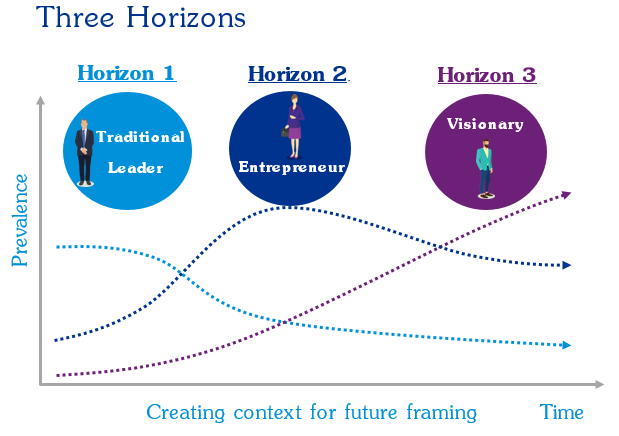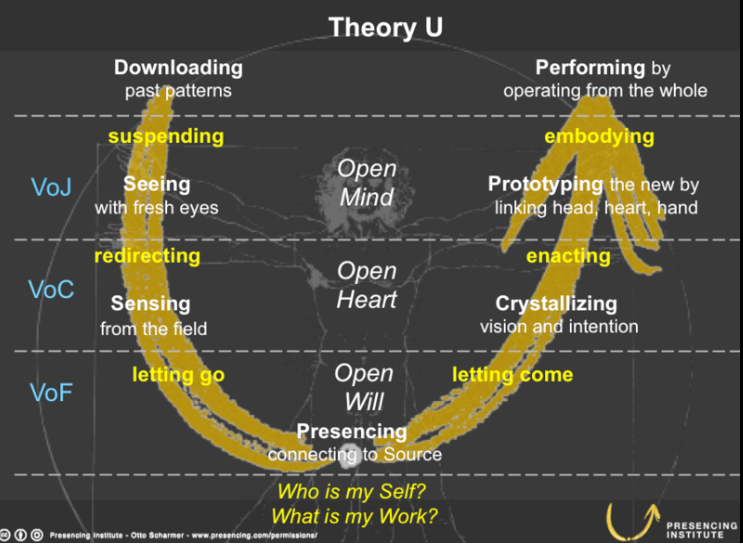We can’t succeed in the future without letting go of the past
The future is full of exciting and disruptive possibilities. Generally speaking, traditional leaders are aware of the myriad of drivers that pose risks to their existing business model and opportunities to change. However, many of them are predisposed to using the tools and models that have made them successful in the past and have subconsciously committed to these tools as indispensable for the journey forward.
I use the Three Horizon model to create context for future framing. Horizon one is the now, current paradigms, assumptions and existing behaviors. Horizon two is the near future, incremental adjustments, innovation projects, early transformation. Horizon three is the far future, new paradigms, entrenched drivers and transformational shifts from the present.

I spend an inordinate amount of time with organizations, developing high impact/high certainty drivers and crafting narratives of plausible future scenarios in Horizon 3. In addition, I facilitate the co-creation of transformational initiatives and prioritized planning in Horizon 2, the most important phase for re-invention, transformation, innovation and adaptable relevance.
However, after recently spending 90 minutes riffing about the third horizon with a senior executive from Kleiner Perkins, the leading American venture capital firm, I realized that I have underestimated the unmalleable nature of entrenched cultural norms that pose significant barriers in the move away from horizon 1 to the excitement of horizons 2&3.
Although I have infused leadership teams with excitement, enthusiasm and hope about the opportunities in the 3rd horizon, invariably the participants return to their existing work environment, and quickly become paralyzed by the fire-fighting and reactiveness of the status quo. In addition, leaders are typically handicapped by the engrained use of anachronistic tools. I probably have not appreciated how difficult it is to let go of these well-proven approaches and the personal comfort that comes with using familiar tools. However, it is vital that organizations systematically determine what current practices must be suspended or phased out - and identify the new approaches and capabilities that must be embedded into the way they work today. This is a necessity, if you want to open up the possibilities of a relevant future.
In 2107 I had the good fortune to spend time with Otto Scharmer, the man who created Theory U. The principles of Theory U are suggested to help political leaders, civil servants, and executives break through unproductive patterns of behavior that prevent them from empathizing with their clients' perspectives and often lock them into ineffective patterns of decision making.

The world is changing at an unparalleled rate, and if organizations are to build futures with new customer-centric purpose, then it’s imperative that they figure out what aspects of the current state must be suspended. Let’s honor and celebrate the successes and pathways that have led us to the prosperity of Horizon 1, but to be relevant in the future we must determine how we embrace new capabilities and evolved business models.
Creating the capacity to redirect your intention from retrospective views to prospective views will be better served by letting go of the Voice of Judgement, Voice of Cynicism and Voice of Fear. It’s easy writing about this, and I know the implementation is daunting and an arduous process, but there’s simply no way around it…it has to be done.